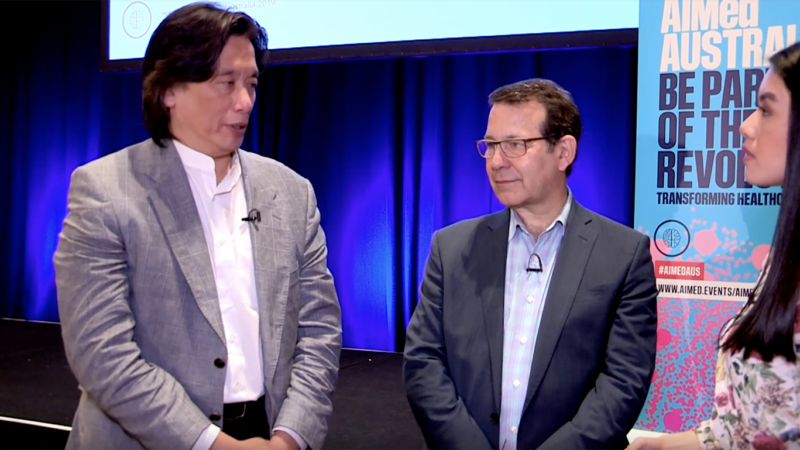EXERCISE PRESCRIPTION TO SUPPORT THE MANAGEMENT OF OSTEOPOROSIS Healthy Bones Australia develop exercise statement for Physiotherapists and Exercise Physiologists
With
Professor Belinda Beck, Exercise Science, Griffith University &
Owner and Director, The Bone Clinic &
Member of Medical and Scientific Advisory Committee, Healthy Bones Australia (formerly Osteoporosis Australia)
Australian Health Journal segment
Filmed in Southport, Queensland | March 2025
In Australia, more than two thirds of people over the age of 60 have osteoporosis or osteopenia. An estimated 183,000 fractures related to poor bone health occurred in 2022. Osteoporosis and related fractures affect individuals, their carers, and the wider healthcare system, costing $2.59B per year for fractures alone.
Osteoporosis is commonly managed medically and typically with treatment. Exercise is also essential in the management of osteoporosis but tends to be under-utilised due to lack of knowledge and unfounded concerns about the risk of injury. In fact, optimal care of people with low bone mass, osteoporosis and/or increased risk of falling can and should include targeted exercise to help prevent osteoporotic fracture.
Osteogenic exercise is important throughout life – in youth to optimise peak bone mass and in adulthood to minimise loss. The exercise recommendations in the current statement, however, are targeted at older adults as osteoporosis typically occurs in the later years. In light of the increased skeletal fragility of osteoporosis, it is recommended that the following exercise prescription be supervised by a clinical exercise physiologist or physiotherapist. Such expertise is required to assess co-morbidities and exercise capacity in order to appropriately individualise the exercise prescription.
Most exercise provides health benefits, and some activity is always better than none. However, specificity and overload are required to improve bone mass and strength, and high challenge balance training is required to prevent falls.
In early 2024, Healthy Bones Australia released a summary of the principles of osteogenic loading and fall prevention, the translation of those principles into clinical practice, evidence-based recommendations for exercise prescription, and special considerations, along with links to several relevant resources for people with or at risk of osteoporosis, falls and fractures.
The document is based on the latest research and developed by an expert Working Group, Advisory Committee and following a National Roundtable. The guidance in the exercise statement acts as a recommendation or exercise prescription for supervised program delivered by clinical exercise physiologists or physiotherapists.
Source: Healthy Bones Australia, Exercise Prescription to Support the Management of Osteoporosis For Physiotherapists and Exercise Physiologists (February 2024
You Might also like
-
Artificial Intelligence (AI) & data skilling clinicians
In this first release, world renowned AI and medical data science experts Dr Anthony Chang and Professor Enrico Coiera spoke to Australian Health Journal reporter Anne Dao at AIMed 2019 Sydney. The conference aimed at clinicians and non-clinicians discussed current clinical applications of Artificial Intelligence in medical imaging, decision support, use of predictive healthcare and machine learning.
-
Allied health flourishes in regional and rural Victoria
Genhealth Hamilton was established in 2015 in regional and rural Victoria. The practice offers a range of services including physiotherapy, podiatry, occupational therapy, exercise science, and group classes such as clinical reformer therapy and clinical Pilates in Hamilton, which has a population of around 10,000. The clinic also serves a wider community within 100 kilometre, reaching rural residents and local industries.
-
Lasers in dental treatment without needles and drills
In 2017, Dr. Omar Zuaiter and Alaa Habeb launched Dentroid, a dental technology startup with a mission to make dentistry a kinder and friendlier experience for patients and dentists using photonics (using laser technology) and robotics, as alternatives to needles, drills and sprays. The vision for the startup is to have dentistry adopt laser technology, addressing the root causes of dental pain & anxiety, and create a pain-free dental experience.



